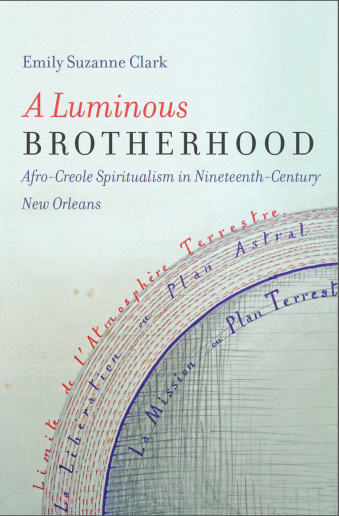Real Native Genius: How an Ex-Slave and a White Mormon Became Famous Indians by Angela Pulley Hudson (review)
The Journal of the Civil War Era
Volume 6, Number 3, September 2016
pages 439-442
DOI: 10.1353/cwe.2016.0058
Adam Pratt, Assistant Professor of History
University of Scranton, Scranton, Pennsylvania
Real Native Genius: How an Ex-Slave and a White Mormon Became Famous Indians. By Angela Pulley Hudson. (Chapel Hill: University of North Carolina Press, 2015. Pp. 270. Paper $29.95.)
Angela Pulley Hudson’s Real Native Genius traces the lives of two individuals who, in the 1840s, convinced thousands of Americans that they were Native Americans. Calling themselves Okah Tubbee and Laah Ceil, the couple toured the Northeast as musicians who performed for large audiences and, later, offered medical cures. Hudson argues that audiences took the couple’s Indianness seriously and offers a host of cultural factors, such as the market revolution and religious revivalism, that explain their success. What she finds is that the Indian portrayals by Warner McCary, a mixed-race former slave from Mississippi, and Lucy Stanton, a Mormon from New York, tapped into Americans’ perceptions of Native people. Their performances lacked authenticity, but they were readily believable to an eastern, white audience that shared the same misconceptions about Native beliefs and practices. When evangelicals or early Mormons spoke in tongues, they were thought to be “talking Injun” (49); likewise, remedies hocked by charlatans were called “Indian cures” (124). These widely held ideas about a singular Native culture and identity, one that was widely constructed by white popular culture, allowed the couple to don identities believable enough to American audiences desperate for Native authenticity.
Born a slave in Natchez, Mississippi, around 1810, Warner McCary had a sad childhood. His purported mother, a slave, and her other children were manumitted, while he was not. McCary long disputed the idea that his owner was his father and instead claimed a Choctaw father. Although McCary lacked a sense of belonging from his family, he found respite in the fact that, starting at a young age, he could please people by playing them music. By 1839, he had run away to New Orleans, where he became something of a renowned musician and fashioned a new identity for himself as a performer. Urged to travel to widen his audience, in 1843 he met Lucy Stanton, a divorcée with three children, whose life had been spent with the nascent Mormon Church. Because Native Americans “were seen as an essential part of the faith’s millenarian promise,” they played a vital role in Mormon theology (45). Mormonism, according to Hudson, was instrumental when it came to the couple’s adoption and perpetuation of ideas about Indians.
In early 1846, the couple married and soon thereafter moved to Cincinnati, where they attempted to convert followers. McCary claimed to be both an Indian and a resurrected Christ, which caused several raised eyebrows. The local press portrayed McCary as “a unique sort of pied piper, leading followers to ruin and relieving them of their dollars” (72). This was the couple’s first foray into being “professional Indians,” an antebellum phenomenon that capitalized on “audiences’ desires for trivia on the vanishing race” (74–75). However, by early 1847 they had joined the Mormons at Winter Quarters, where they soon found themselves in trouble. It appeared that McCary had been seducing Mormon women with the help of his wife. McCary’s behavior, combined with lingering questions about his race, led to his being forced out of town by angry neighbors. By the fall of 1847, McCary and Stanton had traveled east and become professional Indians.
Unlike so many Americans who chased their fortunes in the west, Okah Tubbee and Laah Ceil understood that their brand could succeed only in the East. Impersonating Indians could work only where Indians no longer existed and where misconceptions were widespread. In the East, Tubbee demonstrated his “native genius” when he performed renditions of “La Marseillaise,” a way to show that he was untaught and that he possessed natural gifts because of his heritage. After several years of touring, Tubbee became embroiled in controversy when he married another woman who was unaware of the fact that he already had a wife. As public opinion turned against him, he vanished, lost to the historical record.
Laah Ceil made a name for herself in Buffalo, where she sold medicines until the 1860s. Her…





